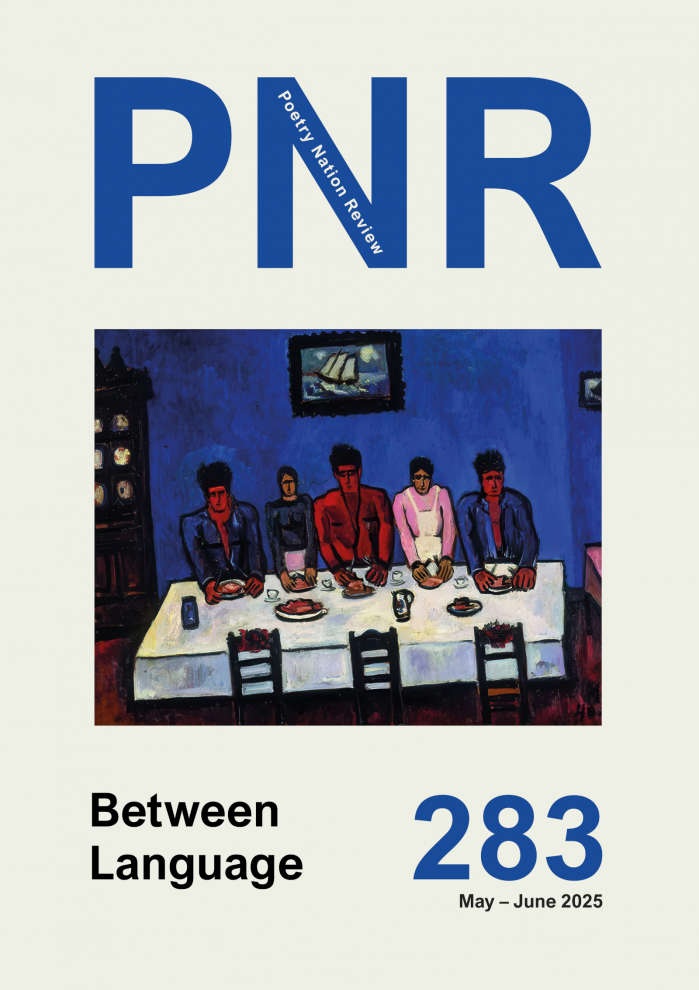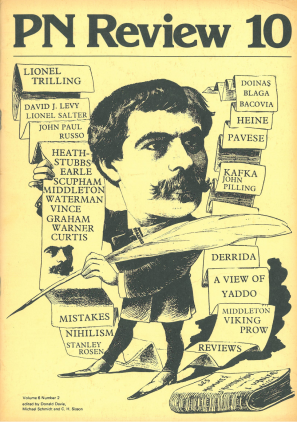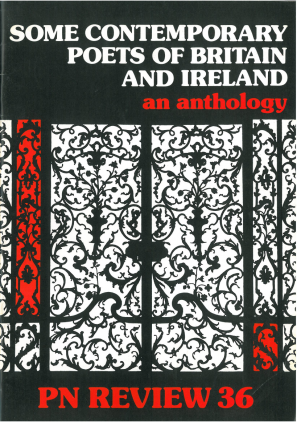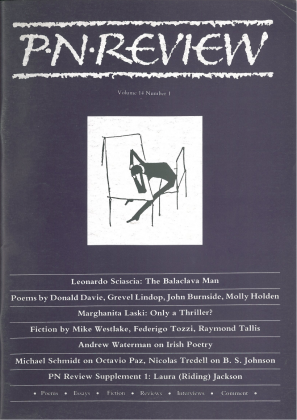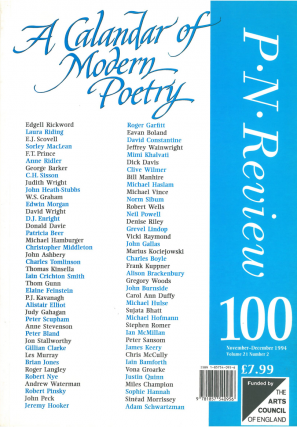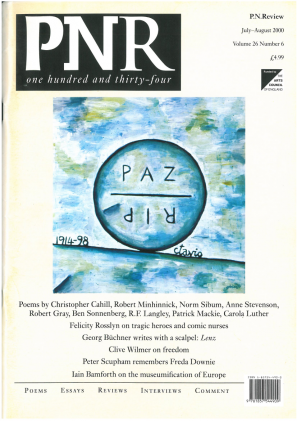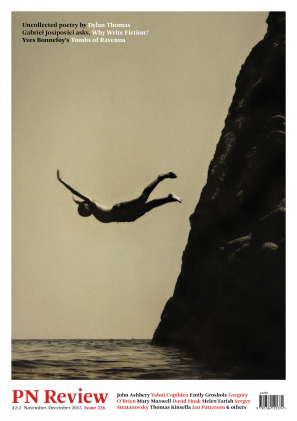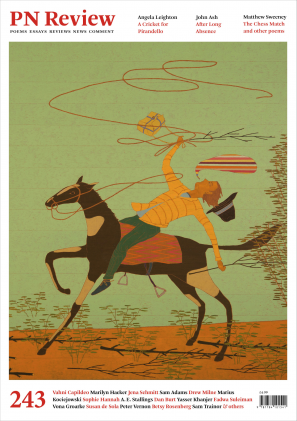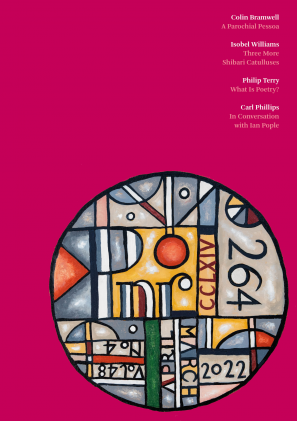PN Review is the most engaged, challenging and serious-minded of all the UK's poetry magazines. A shelf of its back issues now extends to over a metre - I hope it continues to increase.
Simon Armitage
Since we started as Poetry Nation, a twice-yearly hardback, in 1973, we've been publishing new poetry, rediscoveries, commentary, literary essays, interviews and reviews from around the globe. In 2023 PN Review celebrated its jubilee.
Our vast archive now includes over 280 issues, with contributions from some of the most exciting and radical writers of our times. Key contributors include Octavio Paz, Laura Riding, Christopher Middleton, John Ashbery, Les Murray, Patricia Beer, W.S. Graham, Eavan Boland, Jorie Graham, Donald Davie, C.H. Sisson, Sinead Morrissey, Sasha Dugdale, Anthony Vahni Capildeo, and many others.
Our vast archive now includes over 280 issues, with contributions from some of the most exciting and radical writers of our times. Key contributors include Octavio Paz, Laura Riding, Christopher Middleton, John Ashbery, Les Murray, Patricia Beer, W.S. Graham, Eavan Boland, Jorie Graham, Donald Davie, C.H. Sisson, Sinead Morrissey, Sasha Dugdale, Anthony Vahni Capildeo, and many others.
Subscribe to PN Review
SUBSCRIBEFrom the Archive
Three Poems Recurring Dream of the Revolving DoorThe revolving door
Paddled its flat hands through space, like a clock,
But widdershins, orbiting the floor
At the pace of an adult’s brisk walk.
You were four, or very small,
And prone to race or balk,
And skittered ahead into the tall
Diminishing wedge
Of air and light, leaving me to push a wall
... READ MORE
Readers' Choices
Joshua Weiner
Eavan Boland
(PN Review 121)
Stav Poleg
(PN Review 279)
Vahni Capildeo
Christopher Middleton
(PN Review 10)
An Exchange with Daniel Tiffany/Fall 2020
(PN Review 259)Eavan Boland
(PN Review 121)
Stav Poleg
(PN Review 279)
Vahni Capildeo
On Judging Prizes, & Reading More than Six Really Good Books
(PN Review 237)Christopher Middleton
(PN Review 10)
Subscribe to our Substack to receive curated items from our archive.
SIGN UP